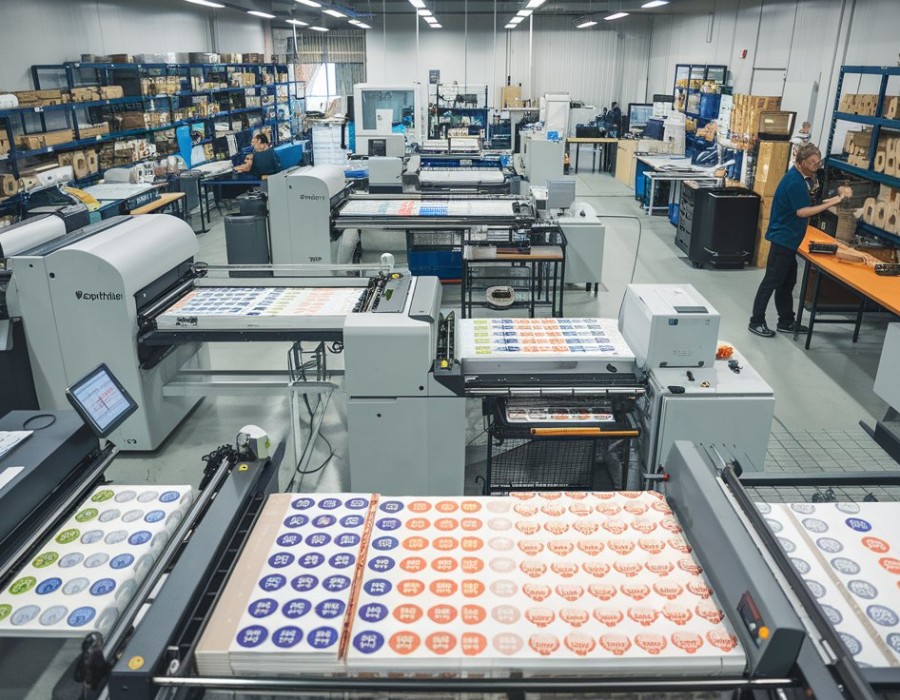Packaging plays a crucial role in the success of a product. It not only protects items during transportation but also serves as an important communication tool for brands. The packaging industry has evolved significantly over the years, and today, it encompasses a wide range of solutions tailored to meet the needs of diverse markets. These innovations are driven by advances in digital printing, eco-friendly materials, and personalized designs, all of which are shaping how businesses present their products to consumers.
The Impact of Custom Labels
Custom labels are one of the simplest yet most effective ways to elevate a product’s market presence. A well-designed label immediately captures the attention of consumers, providing essential information while also enhancing brand identity. Labels can be tailored to different industries, whether it’s food, beverages, cosmetics, or industrial products. This customization allows businesses to differentiate themselves from competitors while ensuring that the label aligns with the product’s identity and values.
With the growth of personalized marketing, labels have become an extension of the brand story. The ability to print unique, vibrant designs, incorporate company logos, or feature seasonal themes ensures a product stands out on crowded shelves. Moreover, custom labels also offer practical benefits, such as the inclusion of essential details like ingredients, barcodes, and regulatory information.
Sustainable Packaging Solutions
Sustainability has become a central focus for both businesses and consumers. The rise of eco-conscious buyers means that packaging choices can significantly impact purchasing decisions. Consumers are increasingly inclined to choose products that use sustainable, eco-friendly packaging over those that do not.
This has driven the packaging industry to innovate, with more companies adopting recyclable, biodegradable, and compostable materials. Sustainable packaging reduces environmental impact by minimizing the use of non-renewable resources and decreasing waste. It also aligns brands with current consumer values, positioning them as responsible and forward-thinking.
For businesses, switching to eco-friendly packaging can also lead to cost savings, especially when it comes to reducing packaging waste and minimizing material use. Lightweight, sustainable materials can lower shipping costs and improve overall efficiency.
The Versatility of Folding Boxes
Another significant innovation in packaging is the folding box, which offers versatility, strength, and customization options. Folding boxes can be designed in a variety of shapes and sizes, making them ideal for industries ranging from cosmetics to pharmaceuticals. These boxes provide excellent protection for products while offering ample space for branding elements and product information.
The convenience of folding boxes also lies in their ease of storage and assembly, making them a cost-effective solution for businesses of all sizes. Their flat-packed nature reduces storage space requirements and transportation costs, all while delivering a high level of customization and protection for the product inside.
Digital Printing Revolution
Digital printing has transformed the packaging industry by offering greater flexibility and cost-efficiency. Traditional printing methods require large quantities to justify setup costs, but digital printing allows businesses to order smaller, customized batches without compromising quality. This is particularly beneficial for small and medium-sized enterprises that require high-quality packaging on a limited budget.
Digital printing also enables quick turnaround times, making it easier to adjust packaging designs for special campaigns, seasonal promotions, or new product launches. The precision of digital printing ensures that even the smallest details, such as fine text and intricate graphics, are sharp and clear.
Smart Packaging and QR Codes
Smart packaging is a growing trend in the industry, with many brands adopting technologies like QR codes to enhance consumer engagement. A QR code on a label or package allows customers to instantly access product information, promotional content, or instructions by simply scanning the code with their smartphone. This interactive element not only provides a richer customer experience but also helps brands gather valuable data on consumer behavior.
Incorporating QR codes into packaging can also streamline inventory management and supply chain tracking, offering practical benefits for businesses.
Conclusion
The packaging industry continues to evolve, driven by advances in technology, sustainability, and design. Whether through custom labels, eco-friendly materials, or innovative printing methods, businesses have more opportunities than ever to create packaging that enhances their brand and meets consumer demands. The rise of personalized, sustainable, and smart packaging solutions is setting new standards for how products are presented and perceived in the market.





Comments